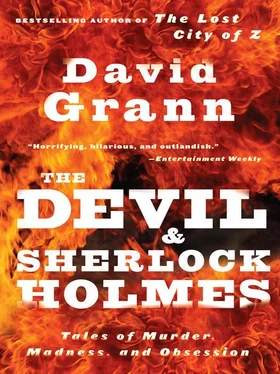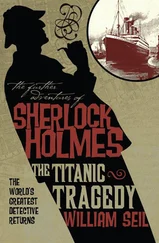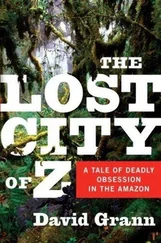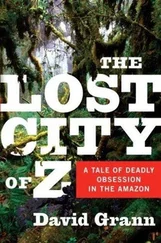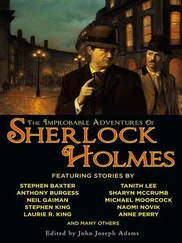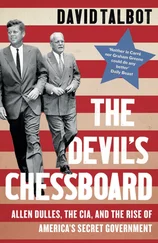He darted across the street to a barbershop. A “Closed” sign hung on the door, but we could see the barber inside, and Constant banged on the window, pleading with him to take one more customer. “There’s another barbershop down the street,” he told me, “but if I went there they’d slit my …” His voice trailed off as he drew his fingers across his throat and let out a strange laugh.
A COURTHOUSE IN HAITI
The trial was more than a thousand miles away from New York. On September 29, 2000, a Haitian court began trying Constant on charges of murder, attempted murder, and being an accomplice to murder and torture—charging him, in effect, with the Raboteau massacre. I went there with J. D. Larosiliere a few weeks later, as the trial was reaching its climax. Twenty-two people—mostly soldiers and FRAPH paramilitaries—were being prosecuted in person. Constant and the leaders of the junta were being tried in absentia.
Although the U.S. invasion had stemmed the bloodshed, the country remained in shambles. Eighty per cent of the people were unemployed, and two-thirds were malnourished. Gangs roamed the streets. Drug-running planes took off and landed with impunity. Even the heralded new democratic system was believed to be rife with fraud. Aristide, after having put a protégé in power, was running for the Presidency again amid allegations that he was trying to pack the parliament with his supporters. Political thuggery and assassination, this time from both the right and the left, were beginning to occur again. “Now everyone knows I was right,” Constant told me later. “Everyone has seen what has happened under Aristide.”
The trial itself was a potential flash point for violence. The U.S. Embassy advised Americans to stay away from the area for fear of “large scale demonstrations, tire burnings, rock throwing and worse.” As our plane landed, Larosiliere told me that he had been warned about potential assassination attempts. “If they attack me, it will only help me prove my case,” he said. “If I’m not safe, then how can my client be safe?”
At the airport, we met a muscular man with mirrored sunglasses and a military bearing, who would serve as Larosiliere’s “attaché.” “You cannot depend on the police to have security,” the attaché told me. “So you need to be armed to protect yourself.” The attaché pushed our way through a crowd of taxi-drivers, bag handlers, beggars, and pickpockets. I smelled flesh and sweat and food, and as we rushed to the car I tried to deflect the arms outstretched to help me with my things. “Welcome to Haiti,” Larosiliere said.
The city of Gonaïves, where the courthouse was situated, is only seventy miles from Port-au-Prince, but, because nearly all the roads in Haiti are unpaved, it took us half a day to get there. The courthouse was in the center of the city, surrounded by tractor-trailers—a makeshift barricade to prevent mobs from rushing in. We entered a small, squat building, where armed guards searched us for weapons; the attaché told me he had left his gun behind, but he stayed close to Larosiliere’s side. We passed through one room and then another; finally, to my surprise, we headed into an open courtyard, where the trial was being held under a billowing white canopy. The judge sat at a table, wearing a black robe and a tall hat with a white band. He had a bell in place of a gavel. The twenty-two accused sat nearby, behind a cordon of armed guards. Larosiliere joined the other defense lawyers, and the attaché and I found a place in the back with the scores of observers and alleged victims.
I had barely sat down when a lawyer for the prosecution began to scream at Larosiliere, jabbing his hand in the air and demanding that Larosiliere tell the court who he was and why he was there. The attaché, who had been at my side, was on his feet before Larosiliere answered. The crowd filled with murmurs: “Toto Constant! Toto Constant!” People looked around as if Constant might be under the canopy. The lawyer began to bark again at Larosiliere; the attaché now stood by Larosiliere’s side, his arms crossed on his chest.
Most of the alleged victims had already testified that on April 22, 1994, soldiers and FRAPH members had descended on the village of Raboteau, known for its staunch support of Aristide. They described being driven from their homes, forced into open sewers, robbed, and tortured. In past attacks, the villagers had fled to the sea, where their fishing boats were tied up. But when they did so this time, they said, the attackers were waiting for them in boats and opened fire. “I climbed aboard my boat,” one of the villagers, Henri-Claude Elisme, said in a sworn deposition. “I saw Claude Jean … fall under the soldiers’ bullets.” Abdel Saint Louis, a thirty-two-year-old sailor, said, “I fled … into a boat.… I then saw Youfou, a FRAPH member, piloting a group of soldiers. They fired in my direction. I called for help. They arrested me, beat me, and forced me to guide the boat. Seeing other people in a boat, the soldiers fired in their direction and hit two girls: Rosiane and Deborah.”
By the end of the assault, according to the prosecution witnesses, dozens of people were wounded and at least six were dead; the prosecution estimated that the actual toll was much higher. Most of the bodies had allegedly been buried in shallow graves along the sea and washed away. “When I went down to the shore, I saw [my brother’s] boat covered in blood,” Celony Seraphin testified. “I only found him on April 28 … tied up with Charité Cadet; both had been murdered. I was not authorized to remove the body.… I demand justice for my brother.”
The testimony occasionally elicited angry shouts from the spectators, and the judge would ring his bell, trying to quiet the courtyard. That afternoon, Karen Burns, a forensic anthropologist from the United States, was sworn in. A Canadian expert on DNA was scheduled to follow her. It would be the first time that forensic evidence and genetic evidence were introduced in a Haitian court, and the courtyard fell silent. Burns stood in the center of the gathering, surrounded by the skeletal remains of three people, excavated from the edge of the sea in Raboteau in 1995. As she spoke, spectators and jurors craned their necks to look at the bones. Burns held up one and said, “This is the pelvis right here.” She put it down and picked up another bone. “This individual was found with a rope tied around his neck, and this is the rope that was retrieved.” As she held up the rope, there were several gasps.
Larosiliere—who, like his client, maintains that the massacre was fabricated as propaganda to discredit FRAPH and the military regime—remained unimpressed. “I live for testimony like this,” he told me that night, drinking a glass of rum, as we sat with the attaché at the hotel restaurant. “She did a scientific study on a site with no integrity. Everyone and everybody walked around it. Come on. You know I can go to graveyards and pick up skeletons from anybody and put them down.”
Refilling his glass, Larosiliere said that if there had been any organized military involvement at all no evidence would have been left on the beach. “Those bodies would be put on a truck, and they’d be taken out on the Rue Nationale—”
“You got it,” the attaché agreed.
“—or the highway—”
“At night,” the attaché added.
“—and dumped into—”
“The Source Puante,” the attaché said.
“Sulfur ditches,” Larosiliere explained. “The best place, because the sulfur eats the body.”
As he spoke, several international human-rights observers sat down next to us, and soon one of them began to argue with Larosiliere about Constant. Larosiliere said, “If for one instant, sir, I believed that Haiti could sustain a true trial for my client, I’d be the first one to throw him on the plane.”
Читать дальше
